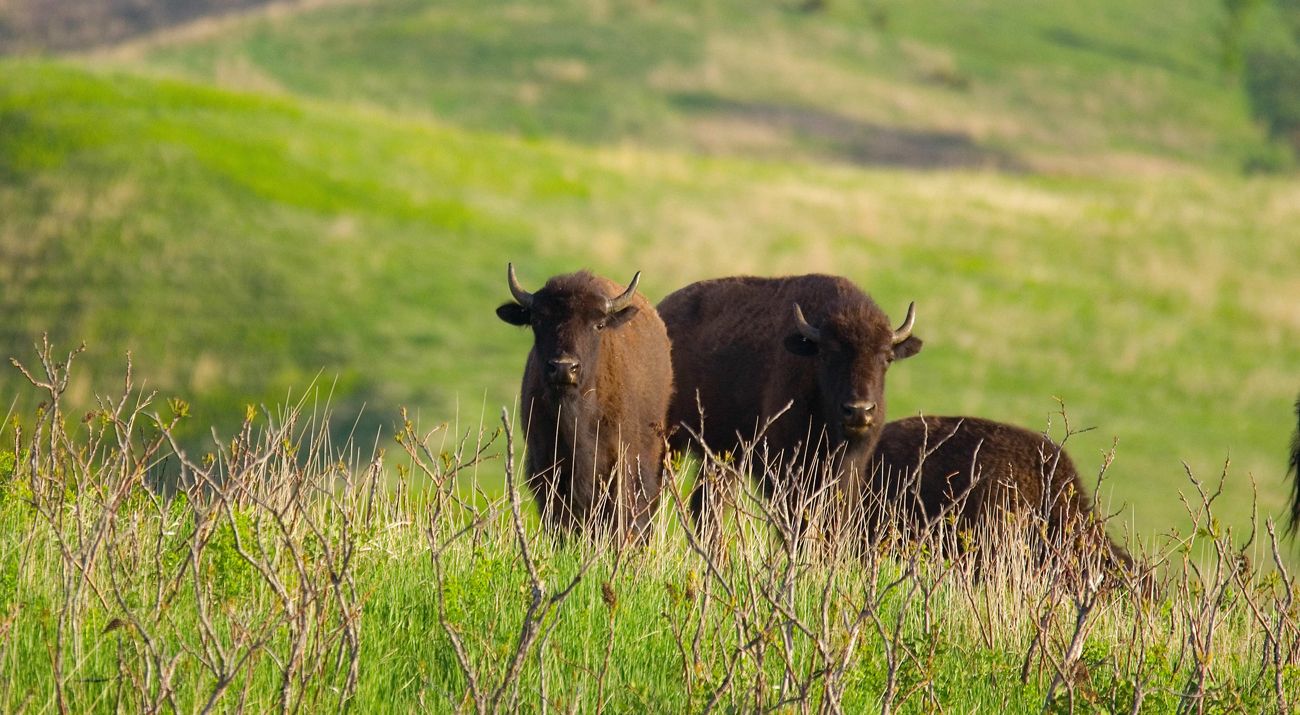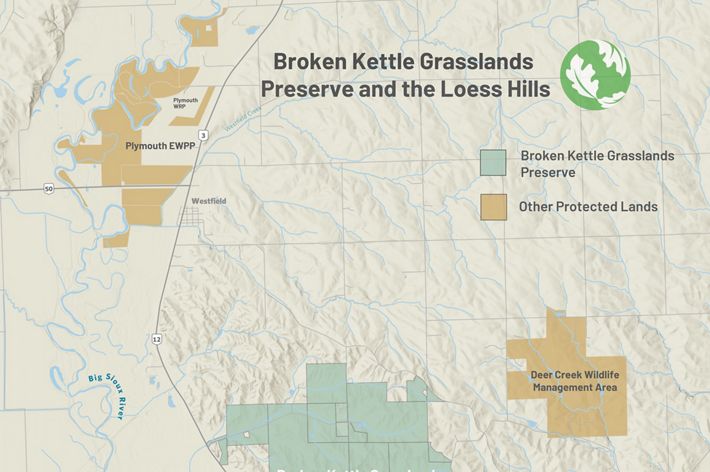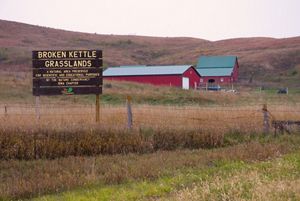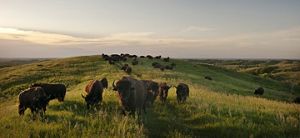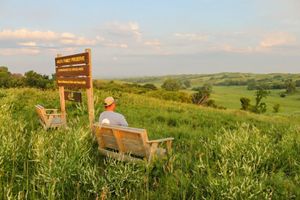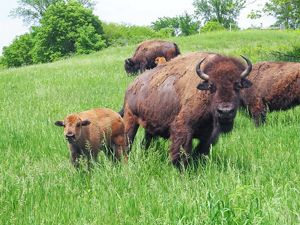Description
Broken Kettle is a sweeping reminder of nature’s beauty. Not only is it the Conservancy’s largest preserve in Iowa, but it contains the largest remaining prairie in Iowa. In 1999, the Conservancy found the prairie rattlesnake, an extremely rare species, at this site, making Broken Kettle even more important to the region.
The Nature Conservancy welcomed a herd of 28 bison at Broken Kettle Grasslands preserve in the fall of 2008—an historic event benefiting the native prairie and the bison herd itself. Learn more about this unique herd, the role that bison play in prairie restoration and the relationship the Conservancy has with bison across North America.
Why You Should Visit
Broken Kettle Grasslands forms the core of our protection efforts in the northern portion of the Loess Hills and it is a stellar example of this rare and intriguing landform. "Loess" consists of tiny windblown silt particles. Most of the Midwest is covered in loess; it’s what helps make our land so rich for farming. Iowa’s Loess Hills were literally blown into existence as the glaciers from the last Ice Age retreated. The extent and depth of the loess deposits along Iowa’s western border are matched only in China.
Location
Just north of Sioux City, in Plymouth County (3½ hours northwest of Des Moines).
Conditions
The terrain is steep and rugged in places and predominantly grasslands. Expect to see snakes, insects, grassland birds and breathtaking vistas while you hike.
Why the Conservancy Selected This Site
The extensive prairie ridgetops feature a variety of plants and animals typically found further west in the Great Plains, and also provide a critical habitat for many species of prairie butterflies. This area also hosts the largest tract of contiguous native prairie left in the state.
What the Conservancy Has Done/Is Doing
Broken Kettle Grasslands is the core of our protection efforts in the northern portion of the Loess Hills, where the Conservancy and partners have protected more than 6,000 acres to date. Fire and grazing are important processes for this landscape and lie at the core of our management efforts at the site.
